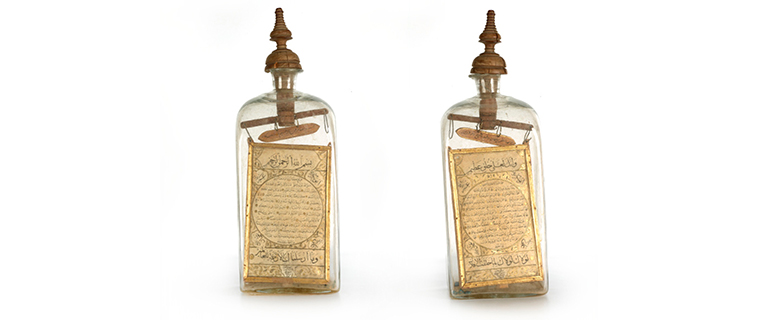
Hilya Inside a Bottle
Calligrapher: Muḥammad Shihāb al-Dīn
Ottoman, 1219 AH/1804 CE
Hilya, meaning “decoration” or “adornment,” denotes both a literary genre and a type of calligraphic composition dedicated to the traditional description of the Prophet Muhammad (PBUH), based on hadith accounts. The descriptions portray the Prophet as remarkably graceful, attractive and intelligent, but distinctly human, not divine.
Hilyas such as this early 19th century CE version were a way to represent the physical manifestation of the Prophet without depicting him visually. They were used by Muslims as a devotional aid, adorning the walls of mosques, palaces and homes. It was believed that a hilya could prevent misfortune and, consequently, they were a common housewarming gift in some regions. They continue to occupy a central place in the Islamic calligraphy tradition: aspiring calligraphers often create a hilya as a demonstration of their mastery.
The hilya in a bottle shown here follows the style created by the Ottoman calligrapher Hafiz Osman (1642 – 1689) in the late 17th century CE. The description of the Prophet is written in the circular disc at the center, with the names of his four primary successors around the edges. Across the top is the Qur’anic phrase “In the name of God, the Merciful, the Compassionate,” and along the bottom is Qur’an verse 21:107 emphasizing the Prophet’s universal role: “And we have not sent you, except as a mercy to the worlds.” Large hilyas include other elements, such as a crescent outlining the central circle.
Learn More
For more on the tradition of calligraphy in Islam, check out the titles in our Main Collection. You can also browse our extensive collection of digitized calligraphic items in the Digital Repository.

Add new comment